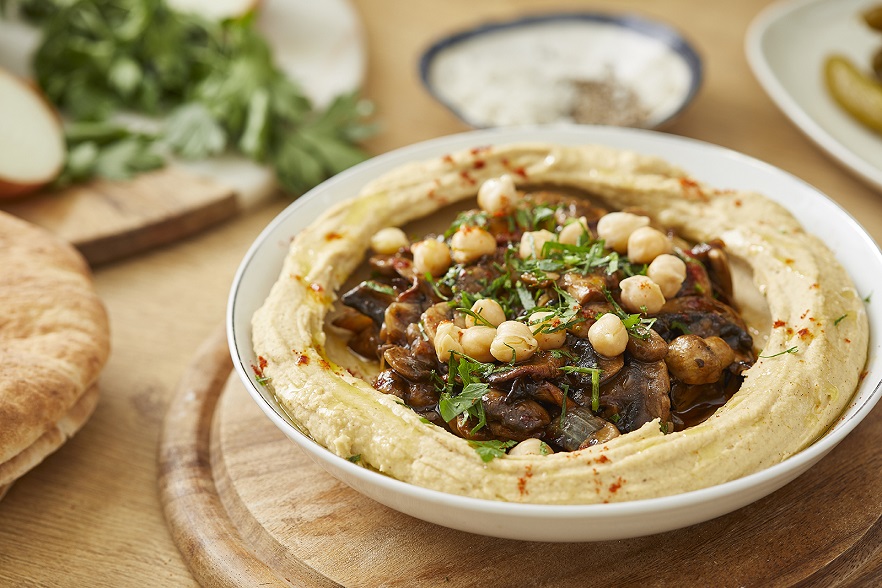7 good reasons to make tahini a regular in your kitchen
* Keep in mind that not all statements in this article have been scientifically validated, so handle this information with care. When in doubt, always consult a nutritionist.
We've summarized all the good things tahini has to offer you
Tahini: fattening or healthy?
On the one hand, raw tahini contains about 60% fat and there are over 600 calories in 100 grams of tahini. On the other hand, tahina contains respectable amounts of unsaturated fat, protein, minerals such as: calcium, zinc, phosphorus, manganese, magnesium, potassium and B vitamins.
Tahini is an essential component of high-fat diets, such as a ketogenic or paleo diet. In other types of diets, when the main goal is weight loss, it is recommended to take no more than 2 tablespoons of tahini per day.
Note that real tahini is made from 100% ground sesame. But it should be remembered that there are significant differences between manufacturers.
There are 2 main types of tahini:
Normal, white tahini - made from white sesame.
Whole sesame tahini - as the name suggests, made from unpeeled sesame.
The main differences between the two varieties are reflected both in their nutritional values and taste. So for those who haven't tried it yet, here it is:
Rich in calcium
As mentioned, tahini is an excellent source of calcium, especially for vegans. In fact, two tablespoons of raw tahini made from whole sesame seeds contain about 230 mg of calcium - nearly a quarter of the recommended daily calcium intake for women up to age 50. - Helps build and strengthen bones, among other things.
Rich in antioxidants
Tahini is rich in antioxidants called lignans, which help prevent free radical damage that can cause a variety of diseases. Among other things, the lignans in tahini can reduce the risk of cancer and protect the liver from free radical damage.
Kan het lipidenprofiel in het bloed verbeteren
Studies show that consuming sesame and tahini can lower cholesterol and triglycerides, which are major risk factors for heart disease.
A study of 50 people with osteoarthritis found that subjects who consumed three tablespoons of sesame seeds daily for two months, in addition to standard treatment, showed a significant decrease in cholesterol and triglycerides compared with those who received treatment but did not consume sesame.
Another study, conducted over six weeks on 41 people with type 2 diabetes, showed that in subjects who replaced part of their breakfast with two tablespoons of tahini, there was a significant decrease in triglyceride levels compared to the control group.
In addition to phytosterols and lignans, tahini contains a generous amount of monounsaturated fat, which helps lower cholesterol levels - also found to be effective in treating "bad" cholesterol (LDL).
Zou eigenschappen tegen kanker kunnen hebben
Sesame seeds, from which tahini is made, contain substances that may have cancer-fighting properties. They include antioxidants such as sesamin and sesamulin, which, according to several studies on animals, can eliminate cancer cells and slow the growth rate of cancer tumors. However, more studies in humans are needed to confirm the conclusions.
Zou antibacteriële eigenschappen kunnen hebben
Tahini and sesame have antibacterial properties, probably due to the large amount of antioxidants they contain. One particularly promising study showed that extract of sesame seeds was effective against 77% of resistant bacteria samples tested.
Zou ontstekingen kunnen remmen
Often chronic inflammation is the source of disease development. The good news is that certain nutrients can fight inflammatory conditions, such as sesame seeds - the main ingredient in tahini. Studies show that the antioxidants in tahini can relieve inflammation and pain associated with injuries, as well as lung infections.
Zou voor de gezondheid van de huid bevorderen
The tahini is rich in healthy fats that increase the absorption of fat-soluble vitamins such as vitamin A and vitamin E, which are essential to combat signs of aging. It also contains zinc, which is essential for the production of collagen, which is responsible for skin elasticity.
In other words, eating tahini can contribute to supple and glowing skin.

Not just with hummus
Although it usually goes with hummus, the truth is that it can be combined with a long list of foods, salty and sweet. Here are some ideas:
Salad dressing - Tahini goes well as a dressing for chopped salad or sliced vegetables. You can use raw tahini, or mix equal amounts of tahini and water, along with lemon juice and garlic.
Smears in different colors - besides the traditional tahini spread, you can grind the tahini with different toppings. For example boiled or baked beets (creating a purple and attractive tahini for children), lots of parsley for a green tahini, roasted sweet potato for an orange and sweet tahini or roasted red bell bell pepper for a reddish tahini.
Sinaia - an incredibly delicious Middle Eastern dish consisting of minced meat, tomatoes and pine nuts smeared with tahini sauce.
It also has vegan versions, with vegetables like cauliflower or when artichoke hearts replace the meat.
Halva spread - easy to prepare: mix equal amounts of raw tahini and silan (date syrup)